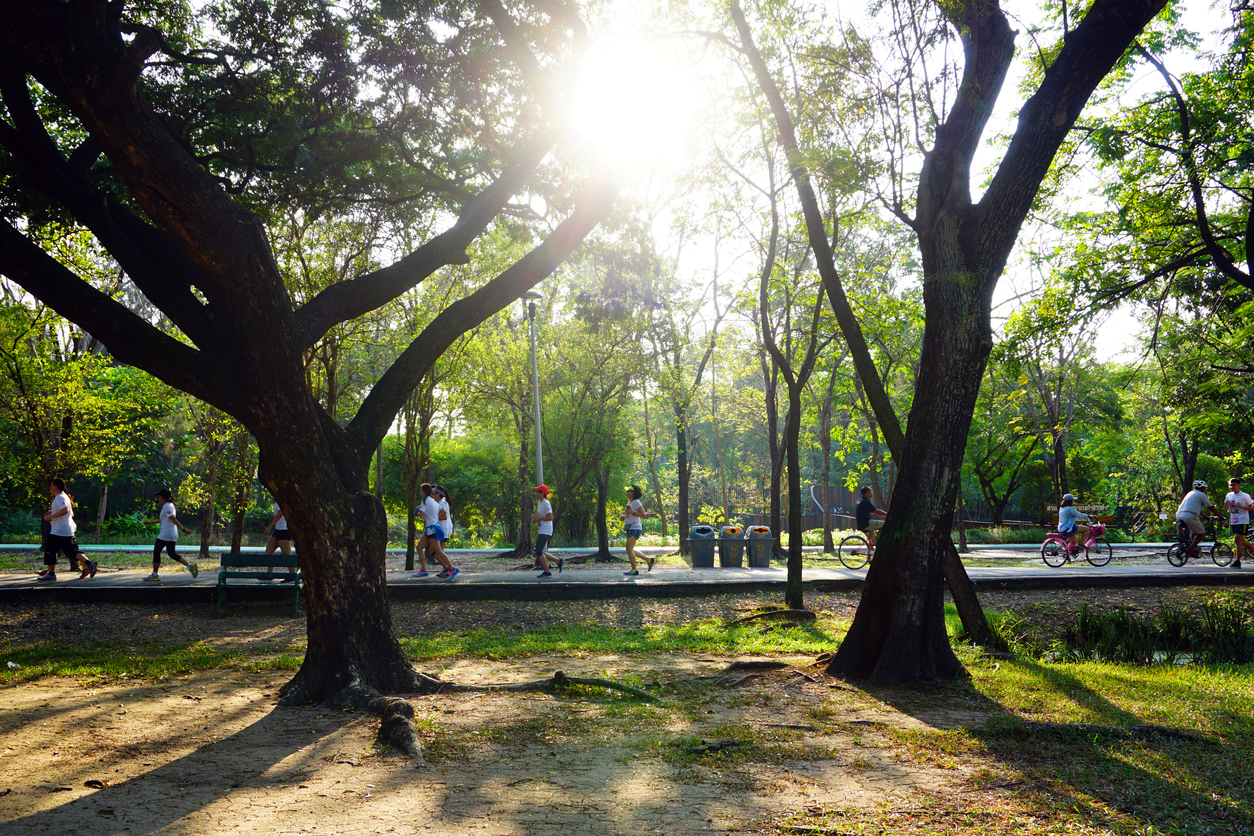Many local transportation projects rely heavily on federal funding. In fact, approximately one-quarter of all funding comes from the federal budget. Unfortunately, only about 2 percent of federal tax dollars are allocated for transportation and infrastructure projects. As a result, state and local government officials can be hesitant to allocate what little funding they get to safe transportation and infrastructure initiatives.
The best way to get state and local governmental support for bicycle and pedestrian projects is through education. Specifically, education about the financial benefits of embracing these safe alternatives to vehicular traffic projects. Cities that embrace bike and pedestrian infrastructure tend to save money, reduce traffic, and increase citizen safety. Governments will be more inclined to secure and allocate funding if they believe it is cost-efficient.
Cost of Traditional Infrastructure vs. Safe Infrastructure
Here’s a fact: safe transportation alternatives are less expensive than traditional vehicular infrastructure. Proving this fact can help your campaign for bicycle and pedestrian infrastructure in your local state, town, or community.
Cost of Traditional Infrastructure
Traditional infrastructure refers to roads, intersections, tunnels, bridges and means of transportation that are used to support vehicular traffic. In other words, they are the streets you drive on every day, the signs that direct traffic, and the signals that help to guide transit through a community. Across the nation, there are more than 4.09 million miles of roads and highways. If you consider each lane of traffic as its own road, the mileage surges to 8.61 million.
Our traditional infrastructure is crumbling. Our roads are riddled with potholes, our bridges are becoming fragile, and our signage is fading. State and local government entities must pour millions upon millions of dollars into not only creating this infrastructure, but fixing and maintaining it, as well.
Just how much does it cost to build a road in America? That depends on the type of road, where it is located, terrain, and the surface used, among other things.
Here are some estimates of what it would cost to build one mile of highway in the United States:
- Rural undivided two-lane highway: between $2 million and $3 million
- Urban undivided two-lane highway: between $3 million and $5 million
- Rural four-lane highway: between $4 million and $6 million
- Urban four-lane highway: between $8 million and $10 million
- Rural six-lane highway: approximately $7 million
- Urban six-lane highway: approximately $11 million.
These are just estimates that do not take into account the specific needs of a local community, including bridges, tunnels, water, zoning restrictions, or existing buildings in the area. These costs can skyrocket when a road must navigate difficult terrain and governmental restrictions.
Cost of Alternative Infrastructure
Building dedicated bicycle and pedestrian infrastructure are considerably less expensive than constructing and maintaining traditional roads. Again, the specific cost of building safe infrastructure in your community will depend on:
- Whether you’re in a rural, suburban, or urban location
- The specific type of infrastructure you’d like to have constructed
- Existing highways and infrastructure
- Water, wetlands, and other hazards
- Zoning restrictions
- Cost of materials, and
- Additional features desired (e.g., curbs, drainage, sidewalk retrofit, engineering)
Generally speaking, however, constructing one mile of a 5-foot-wide dedicated bicycle lane can cost between $5,000 and $535,000. The average cost of a bike lane in the United States is $133,170. That’s a huge fraction of the cost of building a simple undivided two-lane highway.
Additional Features Can Drive up the Cost of Alternative Infrastructure
It’s important to address the fact that these average costs can jump when designs include additional and optional features. These features are often necessary to ensure that the safe infrastructure project is ideal for a specific location. However, they can increase the cost of doing business.
Take Seattle, for example. The city recently paved 4 and one-half blocks of dedicated bike lanes along Seventh Avenue for a total cost of $2.8 million. Why was Seattle’s project so expensive? Here’s a look at some of the costs:
- New streetlights: $374,000
- Removing old pavement, sidewalks, and posts: $209,950
- Traffic detours and police costs: $291,000
- Subsurface fill, deck: $179,073
- Stormwater drains and pipes: $162,900
- Sidewalks: $190,600
- Curbs and corner ramps: $151,000
- Paving a new concrete street: $86,100
- Black asphalt: $75,000
- Bicycle signals: $30,700, and
- Striping and icons: $30,320.
The city also spent $1 million in overhead to pay for design, surveying, staff compensation, and other necessary expenses.
It should be noted that these improvements were probably not all necessary. Your local town may not need to go to such great lengths to construct safe and accessible bike lanes and pedestrian walkways. At the same time, vehicular transportation and existing infrastructure were also improved during these renovations, which still cost considerably less than building or maintaining city roads.
While the city of Seattle spent quite a bit of money up front, it can expect the reap tremendous benefits, as a result. Safer infrastructure halves the likelihood of a bicyclist suffering a fatal injury in an accident. Safer roads mean fewer accidents and less traffic accident-related deaths. This alone should justify allocating funds to safe infrastructure projects.


